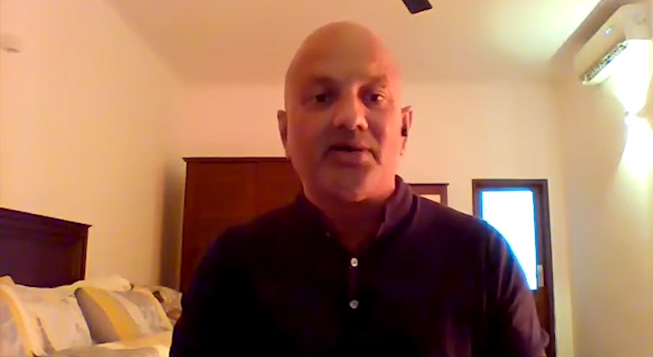Air Chief Marshall HD Abeywickrama, Sri Lanka Air Force
Air chief Marshal Harsha Duminda Abeywickrama was born on 28 November 1960.
Podcast
Podcast: Play in new window | Download
Follow TBCY RSS
Overview
Ashutosh Garg engages in a conversation with Air Chief Marshal Harsha Abeywickrema, RWP, RSP, VSV, USP, RCDS, PSC, GFI, a senior Sri Lankan air force officer and fighter pilot who served as the Commander of the Sri Lankan Air Force from 2012 to 2014 and later went on to serve as the Chairman of the Bank of Ceylon.
Harsha Abeywickrema, a devoted Buddhist and an aficionado of Philosophy, narrates the story of his heroic life. From flying supersonic aircrafts close to the speed of sound to leading the air force of a nation- his tales are awe-inspiring.
The man whose stratagem helped maintain peace and harmony in his country talks about the milestones of his life humbly, with an enlightening smile on his face. He explains how the Air Force and the Buddhist way of living molded him as a better person.
“I was sent to China. I didn’t know Chinese. The Chinese pilot didn’t know English. And only two people could go on the plane”, he reminisces and smiles.
Harsha Abeywickrema’s story is an inspiration for the people of generations to come.
Profile
Air chief Marshal Harsha Duminda Abeywickrama was born on 28 November 1960. He joined the Sri Lanka Air Force (SLAF) with the 8th Intake of Officer Cadets in 1980 and was commissioned as a Pilot Officer in 1982.
At the inception of his career in the early 1980s, combat flying was non-existent due to the relatively peaceful situation of Sri Lanka and the only active flying Squadrons were the fixed-wing and rotary-wing aircraft. When the separatist conflict emerged in the mid 1980s, the SLAF went into battle with the available fleet of aircraft. This was a challenge for the pilots of the SLAF and as a young Officer, he was one of the foremost Pilots who took flight into such combat operations. Subsequently, he went on to log substantial hours flying transport aircraft and light attack aircraft in numerous combat operations. Due to exceptional flying capabilities, he trained as a Qualified Flying Instructor in the very early years of his career.
The escalation of the separatist conflict in the late 1980’s highlighted the importance of fighter jets. Considering his role in the initial stages of combat, he was selected as one of the first pilots to take up training in fighter jets. He was also given the responsibility of establishing the first Fighter Jet Squadron of the Sri Lanka Air Force. Subsequently he was appointed as the first Commanding Officer of No 5 Jet Squadron,
consisting of the subsonic FT 5 and the supersonic F7 Jets. Being the first Commanding Officer of this Squadron, he inculcated a culture unique to the fighter jet pilots, commanding respect from all quarters of the SLAF. He holds the honour of being the first Sri Lankan pilot to fly supersonic. Subsequently, he was entrusted with the responsibility of selecting a more suitable fighter Jet for the SLAF to upgrade the fleet. As a result, he was instrumental in inducting the Israeli-built Kfir fighter jet which proved to be an indomitable force in the separatist conflict.


